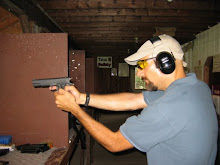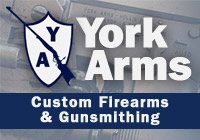(Here's a good one (first time poster) JayG is driving is infamous Dodge and happens to be the first on a multiple car pile up, so much so, debris is still settling. We believe Jay carries a first aid kit (right) and is the son of a retired policeman what is Jay prepared to do?)What am I prepared to do?
1. Call 911.
2. Position Dodge to warn traffic and shield as best as possible.
3. Assess injuries and treat minor wounds.
I do have a pretty detailed first aid kit in my truck; what I do not have is any significant or lasting training in first aid. I've taken a crash CPR course 10 years ago (when TheBoy was an infant); I haven't followed it up with anything more comprehensive than a quick glance at some ideas for improving my first aid kit. Knowing your limitations is probably the most important part of helping; if you try to provide treatment beyond your expertise, you can put others in a world of hurt.
At some point I should take a refresher CPR course; it's always good information to have and useful for many reasons. I should probably revamp my first aid kit as well - I have one of the large kits augmented with some additional items (large bandaids, gauze, tampons [they stop bleeding, right?]), but it could use some updating and tweaking. At a minimum all medicine should be checked for expiration and all bandages should be inspected to make sure the wrapping is still intact (i.e. they're still sterile). My good buddy Heath (our gracious Northcoast host himself) sent some great links with ideas for adding to first aid kits:
Blow-out kit redux
Chinook Medical Gear
Rendering first aid can be a life-saver if done right. If done improperly, though, you might as well not even bother. Having the greatest first aid kit in the world is of little use if your own skills are barely above that of "remove splinter. Kiss boo-boo", though. Hit your local community college or hospital - chances are one of the two sponsors either free or low-cost CPR courses that will, at the least, give you some pointers on assessing victims and rendering general first aid.
Knowledge is the most important piece of a first aid kit.
That is all.







11 comments:
Don't forget your local Red Cross. They're good for helping you find First Aid and/or CPR classes as well.
Calling 911 is the best thing you can do. Rendering aid is good, within limits, but unless you've got Ambulance Driver in the car with you, you're gonna need professional help.
Thanks for linking to my blowout kit entry. I hope you find it helpful. Any questions or criticisms are appreciated.
-Bo
Since the prevailing wisdom is 'many compressions, no breathing' if you can find the bottom of he ribcage and move two finger widths up and begin compressions, you can help. I would only do mouth to mouth for someone I know, even with the mouthpiece I carry in the glovebox.
As much as I want to help you, I'm not going to get your blood or vomit in my mouth and risk nastiness that starts at the common cold and goes to hep or the HIV...
Matt
St Paul
Just remember ABC- Airway, Breathing, Circulation... Helping keep those three going, and you'll be doing the right thing. Also don't move people unless the car is on fire. Lastly, get and keep a biohazard kit (mask/eyeshield, gloves, etc) in your car.
Um, I was going to say "Go through their pockets for loose cash."
Not an option?
Yes, "Call 911" is what I'd do. I'd add that calling 911 is much more productive if you can answer the dispatcher's questions right away. He/she will ask things like:
* what
* where
* how bad
* how many victims
* their apparent condition
and other things in a similar vein.
I was the first on the scene of a single car rollover on a remote highway at 5AM several years ago. Two dead, 16 year old driver mostly uninjured sitting the ditch in extreme shock, one old man who, according to him, was ejected from the vehicle while it was flipping, then the SUV rolled over him. He was badly broken, dieing, but alert and completely coherent.
My aunt wrapped a blanket around the girl and sat with her. I sat with the old man for 30 minutes until emergency serves arrived. Never felt so useless in my entire life. I was relying on 20 year old boy scout first aid training and a current CPR certification. Nothing I could do but sit with his head between my knees, holding his broken hand and trying not to jar the shattered arm attached to it and making up excuses for why I would not help him sit up.
He died as the EMT knelt next to us. The EMT immediately placed his hands on the man's chest pushed once and his chest collapsed. The EMT could not believe that he had been alive and talking to me for 30 minutes.
After that I added a first aid kit to each vehicle. First aid lessons for myself and my family and the eternal hope that I never, ever have to use either one.
To answer your question call 9-1-1. Wolfwalker is right and WHERE is the most important part of that. I don't know how many times we've had to search around because a caller didn't know where they were.
Both kits are probably, if you'll excuse the expression, overkill. A one handed tournequit is a good idea and there are several commercially available ones out there. Controlling external bleeding from an extremity (yours or other people's) is life saving.
I'd shy away from doing chest decompression since there is significant risk to the procedure and you need to be able to recognize that need first.
Oh, and gloves are a must. Really, you can get by without a face mask or goggles if you're careful, but unless you are going to limite yourself to giving the "Stare of Life", you're going to need gloves.
Did I mention a blanket? Really, really important since all trauma patients become hypothermic. Nice thick wool ones are nice, but the disposable kind are pretty good in a pinch. Remember to put the blanket under the patient as well as on top of them. If possible wrap them up like a burrito. Cold patients do much, much, worse than warm ones.
Red Cross first aid training seems to cover the "kiss the boo boo" kind of emergency, not something like a GSW or even a car accident. Still, it's better than nothing I guess.
Well, I seem to have monopolized another of your blog posts, so I'll just quit now.
Your local diveshop will also have courses available(won't be free, but they are good).
Btw old_NFO, it's now ABCD'S.
The D is for defibrilation and S is for serious bleeding, spinal and shock management.
And I want to add something here that partly contradicts JayG's post: It's better to do _something_ and not do it perfect, than to do nothing at all, especially with life-threatening injuries. Don't be a bystander. I've seen video where completely untrained people revived a drowning victim, doing everything about as wrong as you can go. DO SOMETHING. This goes double if they're not breathing, you can't make them worse than dead.
I'd also highly recommend a pocket mask in your first aid kit for CPR in case you're worried about disease transmission, especially if the victim is in a messy state. Comes with a filter, fits on patient's face. Not expensive either, and can be reused(boil to disinfect).
/Emergency First Response Instructor
WV: worsn as in, you can't make 'em worsn dead
If you ever have the time and the money and the will.
Take a 1st Responder course.
In Minnesota it is 44 hours and now called the Emergency Medical Responder nationally.
I teach it to a few hundred every year. Mostly to LEO students but also to those just wanting the knowledge.
Listen to TOTWTYTR.
Open the airway, stop the bleeding, keep victims warm. Never more a trauma unless they or you are in danger.
Post a Comment